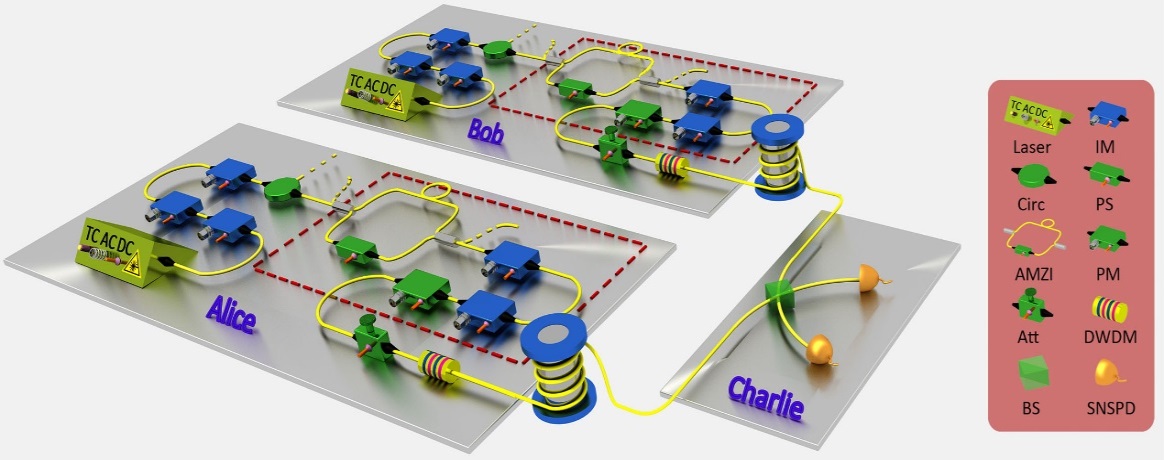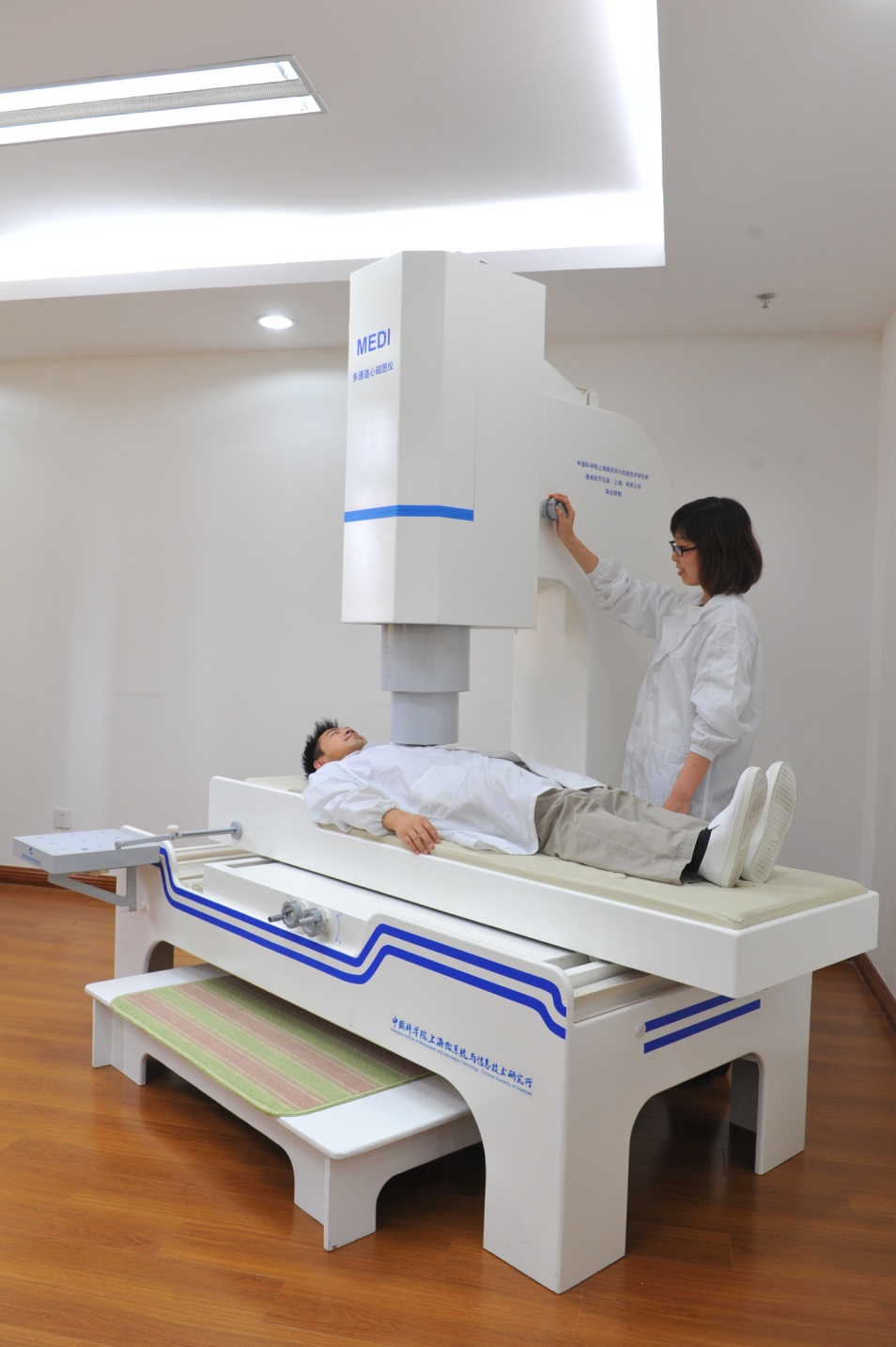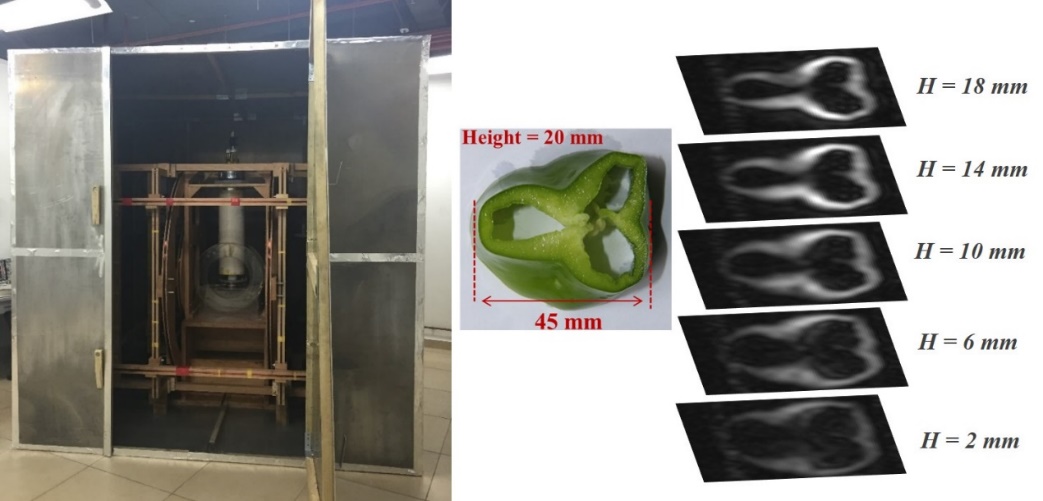Frontier Application of Superconducting Devices
Date:09-06-2017 | 【Print】 【close】
Studies on applications of superconducting electronics are to explore the frontier applications using superconducting sensors/detectors and circuits. The key is to apply the merits of superconducting electronics (such as quantum-limit sensitivity, low noise, high speed and high bandwidth) into various applications, which surpass the traditional semiconducting counterparts. Besides the superconducting devices, the studies on related technologies such as cryogenics, electronics and system integration are also included.
CAS Center for ExcelleNce in Superconducting Electronics (CENSE) is carrying out applications of two superconducting electronic devices. One is Superconducting Nanowire Single-Photon Detector (SNSPD); the other is Superconducting Quantum Interference Device (SQUID).
l Frontier applications of SNSPD
The performance of the SNSPD devices and systems has reached international advanced level. Collaborated with USTC et al, SNSPDs have been successfully applied into various fields, such as quantum key distribution, quantum simulation, quantum fingerprinting, quantum teleportation, satellite laser ranging and quantum source characterization. A few world-leading experiments were demonstrated, such as quantum key distribution over 400 km in fiber. Besides, a startup company called “Shanghai Photon Technology Co Ltd” was founded to commercialize SNSPD technologies.

Geophysical applications: SQUID can detect the gravity field, magnetic field and electromagnetic field with ultra-high sensitivity (2-3 order higher than other sensors). We developed the airborne full tensor magnetic gradient system and carried out several flight tests. The main performance of our system approaches the leading level of the world. We also developed the superconducting TEM (Transient Electromagnetic Method) system and carried out several profile surveying. The prospecting result is identical with the drilling data. The inversion depth exceeds 2000m.

Airborne full tensor magnetic gradient system, TEM system and prospecting results
Bio-magnetism: Owing to its ultrahigh magnetic field sensitivity, SQUID becomes nearly unique choice in weak magnetic signal measurement such as MCG, fMCG and MEG. Based on series novel designs proposed by SIMIT and Juliech Research Centre, we fabricated several type gradiometer modules with different baseline and gradient order in unshielded environment and in magnetically shielded room (MSR), respectively. Using above modules, we demonstrated adult MCG, fMCG and MEG signal detection. We set up 36-channel MCG system and 4-channel fMCG system in MSR first time in China.In past years, we have finished installation of three 4-channel MCG systems in different hospitals, respectively. We have collected more 550 clinical MCG data consisting of 430 normal volunteers and around 100 of patients. Also, we developed 4-channel fMCG and 36-channel MCG system based on SQUID magnetometers. Now we are endeavored to improving the system performance and pushing the MCG systems to clinical applications.

Multi-channel Low-Tc SQUID Magnetocardiography (MCG) System
Ultra-low Field Magnetic Resonance Imaging: Ultra-low field magnetic resonance imaging (ULF-MRI) is one of the most active research topics in SQUID applications nowadays. CENSE built up the first unshielded ULF MRI system working in the urban harsh magnetic environment. Now the ULF-MRI group develops the low-cost MRI system for bio-tissue imaging. This group has long-term, close cooperation with different international groups, e.g. Prof. John Clarke’s group at University of California, Berkeley. Currently the ULF-MRI group is working on the design of novel imaging contrast agents, the pre-polarization technique optimization, and the exploration of medical applications utilizing ULF-MRI system.

ULF MRI system photo and 3D image of pepper sample
